Decor
5 Masters Programs in Interior Design to Consider
Embark on a journey through the labyrinth of possibilities in the realm of interior design with these 5 Masters programs that offer unparalleled opportunities for aspiring designers.
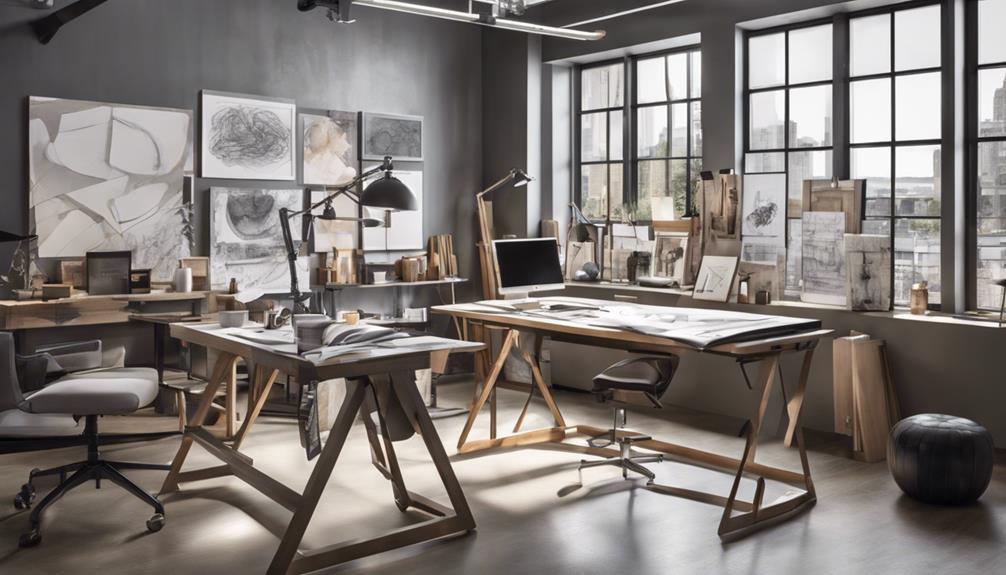
As we navigate the intricate landscape of Master's programs in Interior Design, it's akin to embarking on a journey through a labyrinth of possibilities. These programs hold the keys to unlocking new horizons in the domain of design excellence.
Each institution offers a distinct approach to cultivating the next generation of design visionaries. Let's explore these prestigious programs together, uncovering the nuances that set them apart and discovering the potential they hold for aspiring interior designers.
Key Takeaways
- Accredited programs like SCAD and NYSID ensure quality education and industry recognition.
- Specialized tracks at Cornell and innovation emphasis at Syracuse offer unique learning opportunities.
- Strong industry connections and alumni networks enhance career prospects for students.
- Varied teaching approaches and facilities cater to diverse learning styles and promote industry relevance.
Top Picks: Savannah College of Art and Design
When it comes to top picks for Masters Programs in Interior Design, Savannah College of Art and Design stands out as a beacon of excellence and innovation. Accredited by the Council for Interior Design Accreditation, SCAD offers a range of graduate programs in interior design, including MA and MFA degrees. The college's commitment to the arts is evident in its emphasis on collaborative projects and cutting-edge design techniques, making it a standout choice for those seeking advanced education in this field.
One of the most compelling aspects of SCAD is its high job placement rate for interior design graduates. This speaks to the quality of education and the practical skills that students develop during their time in the program. Moreover, students benefit from access to industry innovations and a strong alumni network, providing valuable connections and opportunities for growth in their careers. SCAD's focus on hands-on experience ensures that graduates are well-prepared to enter the workforce and make a meaningful impact in the field of interior design.
Standout Choice: The New School, Parsons School of Design
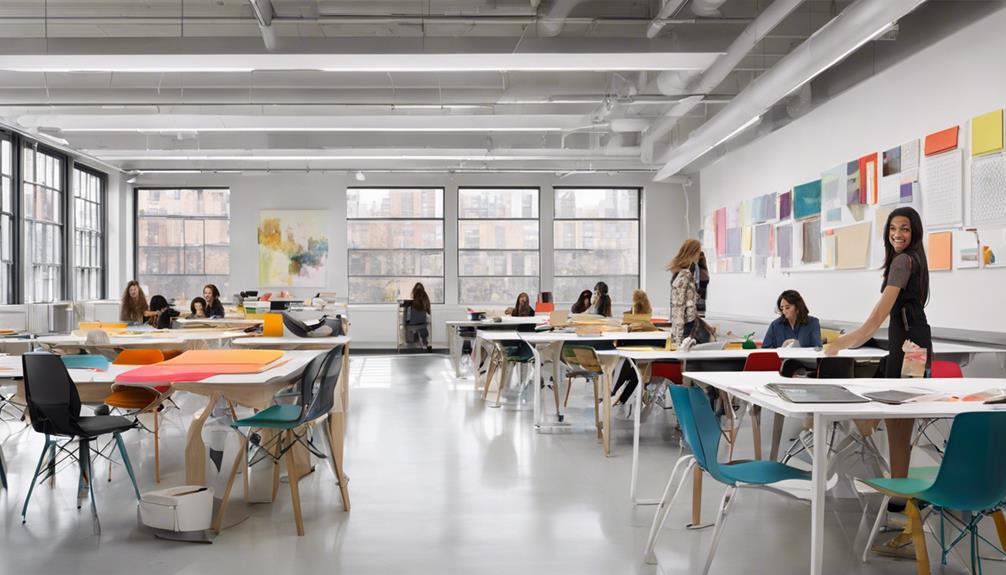
Standing out as a beacon of design excellence and innovation, The New School's Parsons School of Design in New York City offers top-rated interior design programs that set the standard in the industry. Here's why Parsons stands out among the best schools offering interior design degrees:
- Pioneering Legacy: Parsons was the first to establish an interior design curriculum in the US, showcasing a rich history of design education.
- Commitment to Sustainability: The school prioritizes sustainability, preparing students to create environmentally conscious designs for the future.
- Diverse and Inclusive Community: Parsons emphasizes diversity, ensuring a vibrant and inclusive environment where students can thrive and learn from a variety of perspectives.
- Hands-On Learning: With a focus on hands-on industry access, students at Parsons receive practical experience and real-world insights, setting them up for success in the competitive design field.
Parsons School of Design at The New School isn't just a school; it's a hub of creativity and innovation where aspiring designers can truly hone their craft and make a mark in the world of design.
Elite Program: Cornell University
Cornell University's elite interior design program stands as a beacon of excellence, offering specialized tracks in design innovation, sustainability, or health.
The interior design program at Cornell provides a unique opportunity for students to explore advanced training through graduate options and doctoral programs. What sets this program apart is its emphasis on interdisciplinary collaboration and research-oriented projects, preparing students to tackle real-world design challenges.
With access to state-of-the-art facilities, individuals can bring their creative visions to life while honing their skills. Graduates from Cornell University's interior design program are known for being industry-ready professionals who've a solid foundation in both design theory and practice.
This program not only equips students with the necessary tools to thrive in the field but also offers specializations that cater to their specific interests, making them well-rounded and highly sought-after professionals in the industry.
Noteworthy Option: New York School of Interior Design
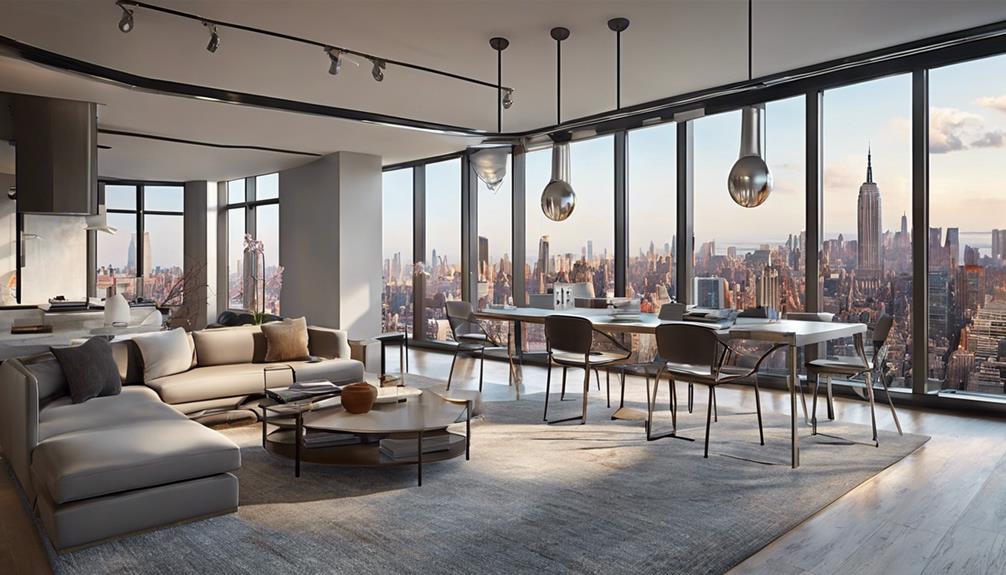
New York School of Interior Design stands out as a notable option for individuals seeking thorough interior design programs with a focus on liberal arts education for critical thinking skills. Here's why we believe it's a top choice:
- Industry Preparation: NYSID offers a range of interior design programs that prepare students for industry associations and the NCIDQ exam, ensuring they're well-equipped for professional practice.
- Program Variety: With options like BFA, AAS, and Certificate Programs, students can tailor their education to align with their specific career goals and aspirations.
- Flexibility: NYSID understands the importance of flexibility in education and provides full-time, part-time, and online study options to accommodate diverse learning needs and schedules.
- Real-World Relevance: The faculty at NYSID consists of practicing professionals, guaranteeing that students receive education that isn't only theoretical but also highly relevant to the demands of the industry.
Promising Selection: Syracuse University
A compelling choice among interior design programs, Syracuse University offers both BFA and MFA programs known for their emphasis on research and innovation in design. Students at Syracuse University benefit from engaging in collaborative projects with industry partners, fostering a strong connection to the design community and real-world applications of their creative skills. The access to the Sue and Leon Genet Gallery enriches the academic experience, providing inspiration and exposure to diverse design perspectives. Notable alumni like Thom Filicia and Stephen Burks showcase the success that can stem from Syracuse University's interior design programs, highlighting the effectiveness of the curriculum in nurturing talent and fostering professional growth. Syracuse University stands out as a hub for innovation in design, where students are encouraged to explore and push the boundaries of traditional design principles. By choosing Syracuse University for your interior design degree, you are immersing yourself in a dynamic environment that values creativity, research, and collaboration.
| Pros | Cons |
|---|---|
| Strong industry partnerships | Competitive admissions |
| Notable alumni | Location may not suit all |
| Emphasis on innovation in design | Limited scholarship opportunities |
Frequently Asked Questions
What Is the Best Master's for Interior Design?
We believe the best master's program for interior design is one accredited by reputable bodies like CIDA or NASAD, offering specializations in sustainable design, healthcare design, or design innovation, with strong industry connections, hands-on experience, and cutting-edge resources.
What Master's Can I Do With an Interior Design Degree?
We can pursue various Master's programs with an interior design degree, like Master in Interior Architecture and Design, M.Sc. in Integrated Architecture & Design, or Postgraduate Certificate in Hospitality Design. These advanced studies enhance skills for career growth.
Is It Worth It to Get a Masters in Interior Design?
Absolutely worth it to get a master's in interior design! Higher salaries, career advancement, and mastering technology and creativity are just a few benefits. Our experience proves the value of pursuing this path.
What Programs Should Interior Designer Know?
Experts understand the programs interior designers should pursue to excel. Our recommendations reflect expertise, passion, and innovation. Stay tuned for valuable insights that will elevate your design career and keep you at the forefront of the industry.
How Can Interior Design Certificate Programs Complement a Masters Program in Interior Design?
Completing a Masters program in interior design can be enhanced by pursuing interior design certificate programs. These shorter, focused programs can provide additional skills and knowledge that can complement the comprehensive education received in a Masters program. Interior design certificate programs can offer practical, hands-on experience and specialized expertise.
Conclusion
As we reflect on these top masters programs in interior design, we can't help but feel inspired by the endless possibilities that lie ahead for aspiring designers.
Take, for example, Sarah, a recent graduate from Cornell University's specialized program in design innovation. With her newfound skills and knowledge, she landed a prestigious internship at a renowned design firm, propelling her towards a successful career in the industry.
The opportunities are limitless, and the future is bright for those who pursue their passion in interior design.
- About the Author
- Latest Posts
Introducing Ron, the home decor aficionado at ByRetreat, whose passion for creating beautiful and inviting spaces is at the heart of his work. With his deep knowledge of home decor and his innate sense of style, Ron brings a wealth of expertise and a keen eye for detail to the ByRetreat team.
Ron’s love for home decor goes beyond aesthetics; he understands that our surroundings play a significant role in our overall well-being and productivity. With this in mind, Ron is dedicated to transforming remote workspaces into havens of comfort, functionality, and beauty.
Alfresco
How Much to Tile Alfresco? Budgeting Tips!
Curious about the cost of tiling your alfresco? Get essential budgeting tips to create a stylish outdoor space without breaking the bank!
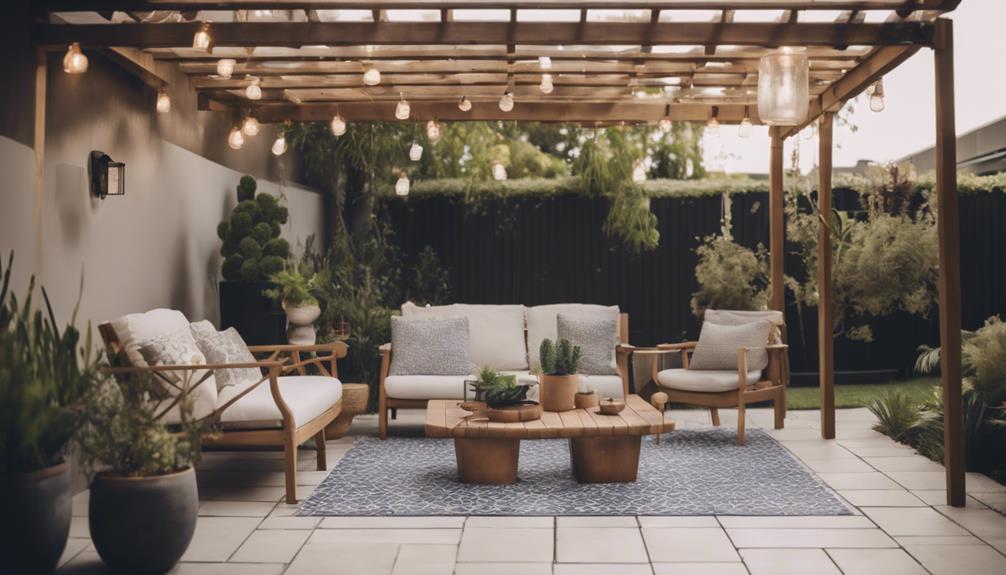
When budgeting for alfresco tiling, factors like area size, tile material, and installation complexity affect costs. Consider affordable ceramic over pricier natural stone. Labor rates range $5 to $14 per sq ft, influenced by space size and design intricacy. Opt for budget-friendly tiles from $1-$20 per sq ft. Look for clearance sales for discounts up to 50% off regular prices. Standard tile sizes reduce cutting fees and waste. Prepare by clearing debris and ensuring a stable substrate for efficient tiling. Understanding these tips can help create a cost-effective alfresco oasis.
Key Takeaways
- Consider ceramic or porcelain tiles for affordability.
- Explore sale and discontinued tiles for cost savings.
- Opt for standard sizes to reduce cutting fees.
- Compare labor costs based on alfresco space size.
- Look for budget-friendly options to tile affordably.
Factors Affecting Alfresco Tiling Costs
When budgeting for tiling an alfresco area, the costs can vary based on factors such as the size of the space and the choice of tile material. The outdoor tile costs are influenced by the square footage that needs to be covered. Larger alfresco areas will require more tiles, increasing the overall expenses.
Additionally, the types of tile selected play a significant role in determining the cost. Ceramic tiles tend to be more essential compared to natural stone options, impacting the total expenditure.
Installation and labor costs are vital components to take into account when budgeting for alfresco tiling. The complexity of the design or patterns desired can raise the installation expenses. Professional labor rates can range from $40 to $120 per hour, further affecting the total cost.
Additionally, additional costs like sealing, grouting, and edging materials should be factored into the budget to ensure a detailed estimation of the project expenses.
Types and Shapes of Tiles
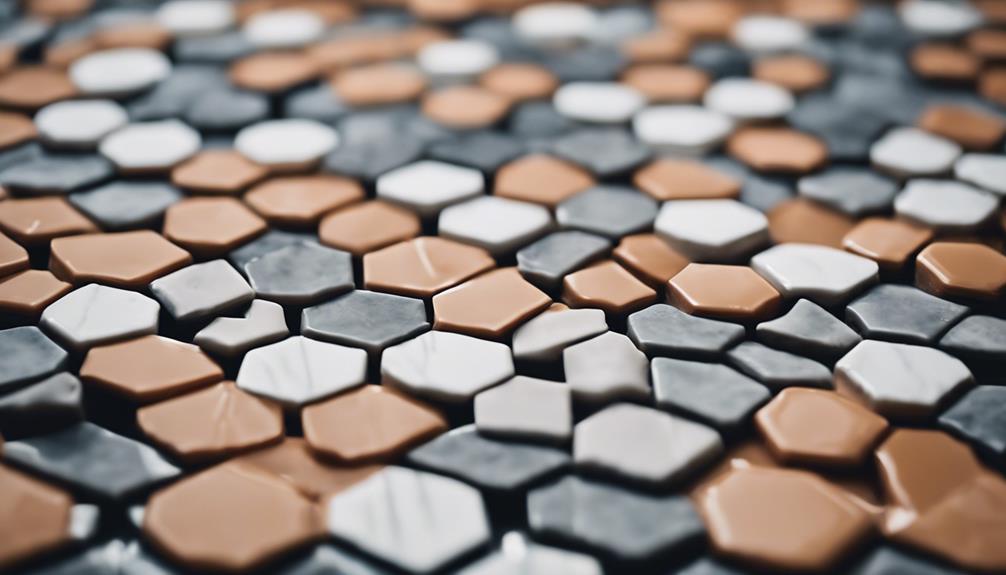
Different types of tiles, including porcelain, ceramic, natural stone, and concrete, are commonly used for alfresco areas, each offering unique benefits and characteristics. When selecting outdoor tiles for your alfresco space, it is crucial to take into account factors like cost, maintenance requirements, and the overall aesthetic you wish to achieve. Porcelain tiles, for instance, are known for their durability and low maintenance, making them a practical choice for alfresco areas. On the other hand, natural stone tiles like slate or travertine can add elegance but may require more upkeep.
Consider the shapes and sizes of tiles as well. Popular shapes for alfresco tiles include square, rectangular, hexagonal, and even custom-designed options. The right tile shape can have a significant impact on the visual appeal and functionality of your alfresco space. Keep in mind the maintenance needs of different tile materials and the overall look you want to achieve when planning your tile installation project.
| Type | Maintenance |
|---|---|
| Porcelain | Low |
| Natural Stone | Medium to High |
| Ceramic | Low to Medium |
| Concrete | Low |
Installation Complexity and Labor Costs
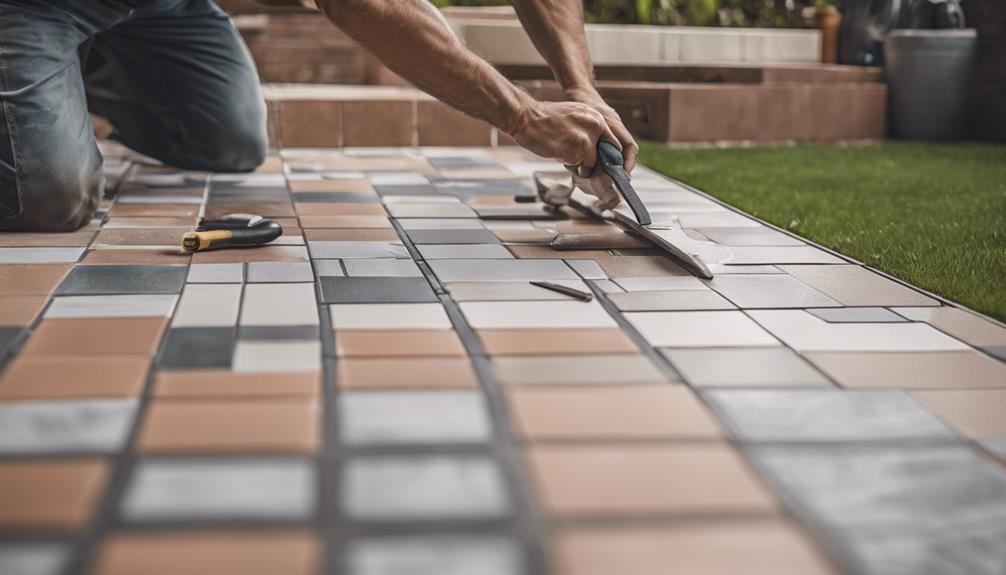
When considering tiling your alfresco area, it's important to understand how the complexity of installation can impact labor costs. Factors such as the intricacy of the design, size of the area, and type of tiles chosen all play a role in determining the overall expenses.
Labor Cost Factors
How do installation complexity and labor costs influence the overall expenses of tiling alfresco areas?
When it comes to labor costs for outdoor tile projects, several factors can impact the final budget. Here are some key points to take into account:
- Installation Costs: Labor costs typically range from $5 to $14 per square foot for outdoor tile installation, depending on various factors.
- Size and Layout: The size and layout of the alfresco space play an important role in labor costs, especially for larger or irregularly shaped areas that may require more time and expertise.
- Professional Expertise: The level of professional expertise and experience of the contractor can affect labor costs, with rates varying based on location and qualifications.
- Preparation and Complexity: Proper preparation of the outdoor surface and substrate is essential. The complexity of the installation, such as intricate patterns or designs, can also impact labor costs significantly.
Considering these labor cost factors can help in estimating the total expenses and ensuring a smooth tiling process for your alfresco area.
Installation Challenges
Installation complexity greatly impacts labor costs for tiling alfresco areas. Factors like irregular shapes and intricate patterns contribute to higher expenses. When dealing with outdoor living spaces, the challenges of alfresco tile installation can result in labor costs ranging from $40 to $120 per hour.
The irregular shapes of outdoor areas often require precise cutting and fitting, adding complexity to the installation process. Intricate patterns demand meticulous attention to detail, further increasing the time and effort needed for the project.
Moreover, uneven surfaces in outdoor environments necessitate thorough substrate preparation to guarantee a durable and long-lasting tile installation. Weatherproofing is another significant aspect that can elevate labor costs, as it requires additional materials and labor to protect the tiles from outdoor elements.
Due to these complexities, hiring professionals for alfresco tile installation is advisable to ensure a high-quality finish that withstands the challenges of outdoor conditions.
Complexity Impact Budget
The complexity of alfresco tile installations directly influences labor costs, particularly when intricate designs or irregular shapes are involved. When dealing with such complexities, it's important to take into account various factors that impact the budget expectations. Here are some key points to keep in mind:
- Labor costs for a complex alfresco tile installation can vary widely, ranging from $40 to $120 per hour.
- Factors like irregular shapes or intricate patterns can greatly increase the complexity of the installation, leading to higher labor costs.
- Specialized tools and techniques may be necessary for complex installations, further adding to the overall expenses.
- Proper planning and clear communication with installers are essential to manage budget expectations effectively and ensure the success of the project.
Shopping for Budget-Friendly Options

When looking for budget-friendly options for tiling alfresco, consider exploring outdoor tiles like ceramic or porcelain. These types of tiles typically range from $1 to $20 per square foot, making them a cost-effective choice for outdoor spaces.
To save even more on costs, keep an eye out for sale or clearance tiles that offer discounts ranging from 10% to 50% off the original price. Opting for standard tile sizes is also advisable to avoid custom cutting fees, which can add an extra $1 to $4 per square foot to the installation budget. By sticking to standard sizes, you can keep expenses down while still achieving a stylish look for your alfresco area.
Additionally, comparing prices from different suppliers is essential to finding the best deals, as prices for outdoor tiles can vary significantly based on the manufacturer and retailer. By being diligent in your search and considering these budget-friendly options, you can tile your alfresco space without breaking the bank.
Standard Tile Sizes and Designs
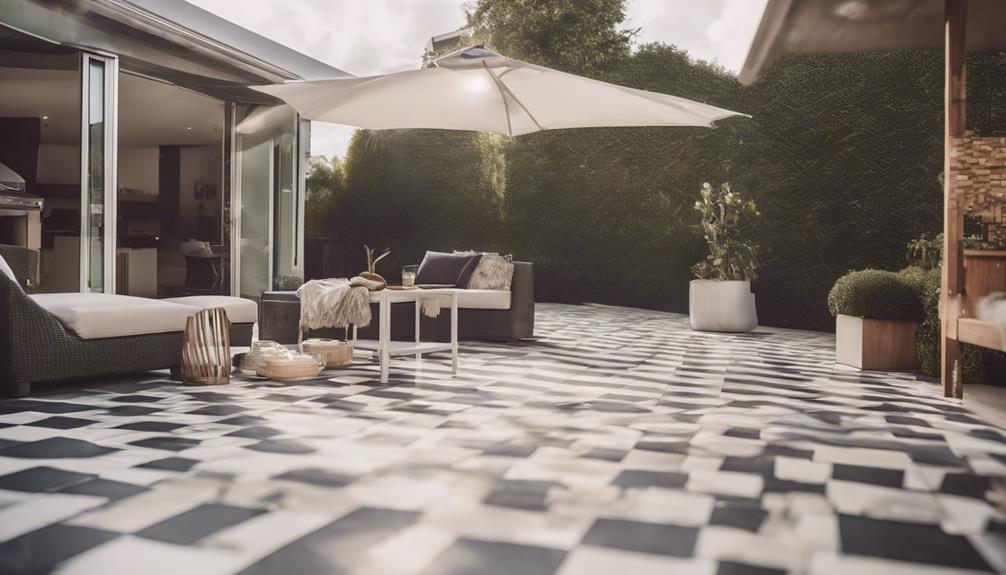
Exploring standard tile sizes and designs for alfresco areas offers versatility and cost-effectiveness in creating stylish outdoor spaces. When considering tiling options for your alfresco space, here are some key points to keep in mind:
- Range of Sizes: Standard tile sizes typically vary from 12×12 inches to 24×24 inches, providing a wide array of choices for your outdoor area.
- Design Versatility: Larger tiles can offer a seamless appearance with minimal grout lines, while smaller tiles allow for intricate patterns and textures to enhance the alfresco ambiance.
- Popular Designs: Common tile designs for alfresco spaces include natural stone looks, wood-look porcelain tiles, mosaic patterns, and geometric shapes, catering to various style preferences.
- Cost-Effective Option: Opting for standard tile sizes can help reduce material waste and installation expenses, making it a budget-friendly choice for creating a visually appealing outdoor retreat.
Consider these factors when selecting tile sizes and designs to transform your alfresco space into a functional and aesthetically pleasing outdoor oasis.
Sale and Discontinued Tiles
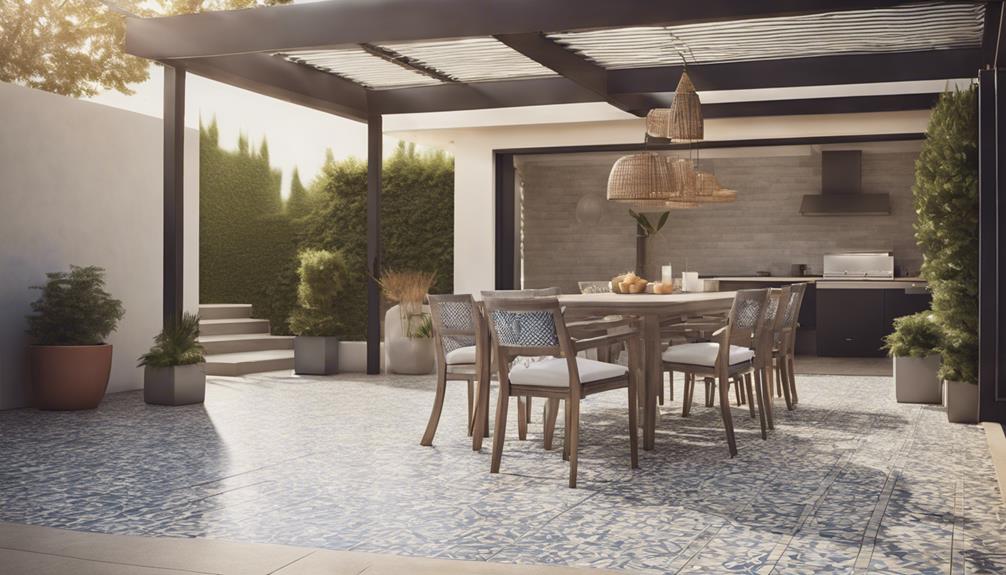
Considering sale and discontinued tiles for alfresco projects can lead to substantial cost savings without compromising on quality or style. These tiles, often available at up to 50% off regular prices, are high-quality options for enhancing your outdoor space. While they may be from previous seasons or discontinued lines, they still offer a stylish solution for tiling within budget constraints.
When shopping for sale and discontinued tiles, it's essential to ensure the quantity available will cover your entire alfresco area. Keeping an eye out for clearance sales at tile stores or online retailers can help you find great deals on these high-quality tiles for your project.
Preparation to Reduce Labor Costs
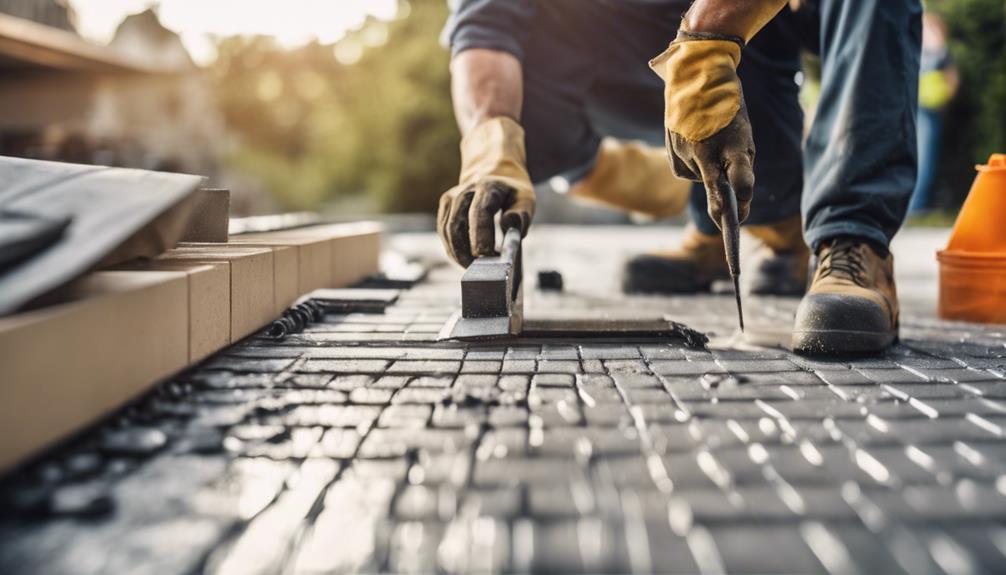
Properly leveling and cleaning the outdoor area before tiling can greatly reduce labor costs. Here are some key steps to contemplate in preparation to minimize labor expenses:
- Clearing Debris: Removing any existing debris, vegetation, or old flooring can streamline the tiling process, optimizing labor efficiency.
- Stable Substrate: Ensuring the substrate is stable and ready for tiling minimizes the need for extensive prep work, ultimately reducing labor time and costs.
- Accessible Space: Clearing the area of obstacles and ensuring easy access for installers can make the job more efficient and cost-effective, saving on labor expenses.
- Accurate Measurements: Preparing accurate measurements and layout plans in advance can help optimize the tiling process, leading to minimized labor costs.
Frequently Asked Questions
How Much Should I Budget for Tile Installation?
When considering tile installation costs, we factor in labor rates, material costs, and additional expenses like grout or patterns. A thorough understanding of these elements is important for an accurate budget that guarantees a successful project.
How Much Does It Cost to Tile a 20X20 Room?
Tiling a 20×20 room can cost between $2,400 and $8,000, depending on factors like tile quality, labor rates, and installation complexity. Proper planning and budgeting are essential for a successful and cost-effective project.
How Much Does It Cost to Lay 1000 Sq Ft of Tile?
Laying 1000 sq ft of tile can cost anywhere from $14,000 to $83,000, influenced by tile type, labor rates, and additional materials. Labor can range from $40 to $120 per hour, with extra expenses for adhesive, grout, and installation complexity.
How Much to Tile 500 Square Feet?
Tiling 500 square feet can range from $7,000 to $41,500 based on tile type and labor costs. Consider materials, labor, grout, and sealants. Planning, getting multiple quotes, and cost-saving strategies help manage expenses.
Conclusion
To sum up, when it comes to tiling your alfresco, it's crucial to take into account various factors that can impact costs.
By exploring different tile options, shopping for sales, and preparing the space effectively, you can save money while still achieving a beautiful result.
Remember, a penny saved is a penny earned, so budget wisely and enjoy your newly tiled alfresco!
- About the Author
- Latest Posts
Introducing Ron, the home decor aficionado at ByRetreat, whose passion for creating beautiful and inviting spaces is at the heart of his work. With his deep knowledge of home decor and his innate sense of style, Ron brings a wealth of expertise and a keen eye for detail to the ByRetreat team.
Ron’s love for home decor goes beyond aesthetics; he understands that our surroundings play a significant role in our overall well-being and productivity. With this in mind, Ron is dedicated to transforming remote workspaces into havens of comfort, functionality, and beauty.
Alfresco
How Much Do Alfresco Blinds Cost? Pricing Guide!
Are you curious about alfresco blind costs? Discover a wide price range and key factors influencing pricing in this comprehensive guide!
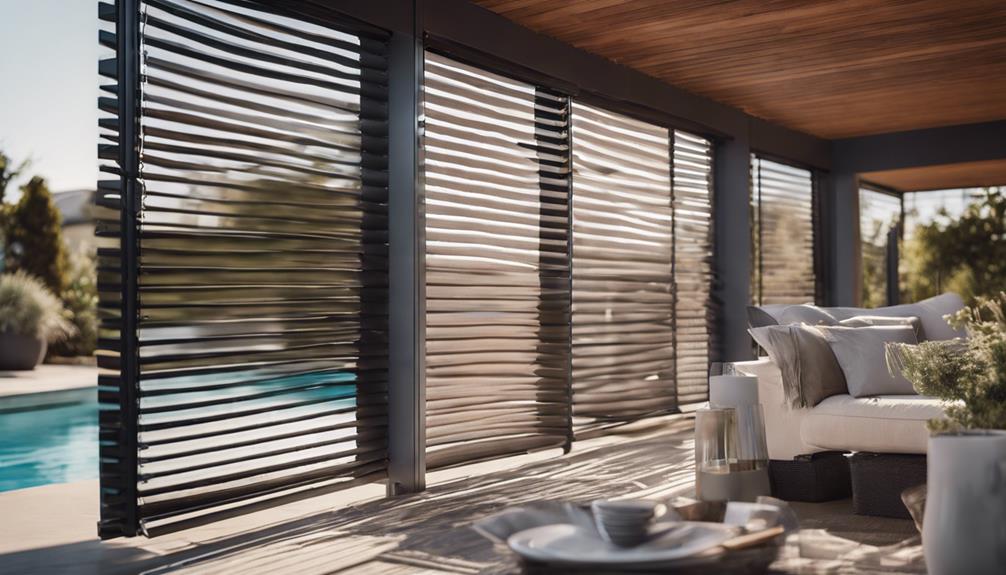
When evaluating alfresco blind costs, key factors like fabric grade and customization influence prices, resulting in a national range of $475 to $925. Basic vinyl blinds range from $200 to $500, offering UV protection and durability. High-end motorized blinds with remote control features can cost between $1,000 and $2,500, depending on brand reputation and customization. Additionally, considering additional expenses like installation, materials, and maintenance is important. For a thorough understanding of alfresco blind pricing, exploring detailed factors such as material options, DIY installation tips, and value for outdoor spaces is necessary.
Key Takeaways
- Alfresco blinds cost between $1,500 to $6,000 per blind.
- Budget-friendly options start at $1,500 for crank style blinds.
- Manual track guided blinds range from $2,500 to $4,000.
- Electric blinds are priced between $2,500 to $6,000 for added convenience.
- Factors like fabric grade, color, model, and installation location impact pricing.
Factors Affecting Alfresco Blind Prices
When considering alfresco blind prices, various factors such as fabric grade, custom powder coating, model, and installation location play an important role in determining the overall cost.
The type of blinds chosen, whether they're basic or custom-made with special features, can greatly impact the outdoor blinds cost. Custom blinds, tailored to specific requirements and sizes, often come at a higher price point due to the additional materials and labor involved in their production.
Moreover, the choice of fabric grade can also influence the overall cost. Opting for high-quality, durable materials may result in a higher initial investment but can lead to long-term savings by increasing the lifespan of the blinds.
Additionally, installation costs vary depending on the complexity of the job and the location where the blinds will be mounted. Factors such as structural adjustments or installing blinds in hard-to-reach areas like balconies or double-storey buildings can incur additional expenses.
Average Cost Range Nationally
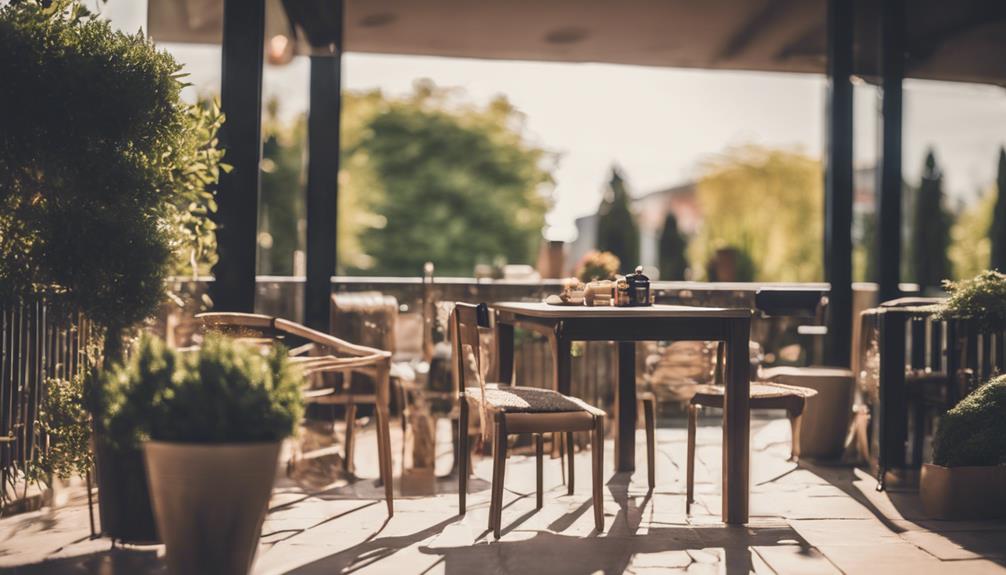
The average cost range for alfresco blinds nationally falls between $475 and $925, influenced by factors such as material and size.
Labor expenses for installation typically range from $30 to $70 per hour.
Understanding these cost variations can help in making informed decisions when investing in alfresco blinds.
National Average Prices
Across the United States, the national average cost range for outdoor alfresco blinds typically falls between $475 and $925. When considering the overall cost, it's important to account for installation expenses, which usually range from $30 to $70 per hour for labor.
The pricing for alfresco blinds can vary depending on factors such as the type of material used, the size of the blinds, and the mechanism involved. Different options, ranging from basic vinyl to high-end custom designs, come with their own average cost ranges.
It's vital to factor in additional costs like installation fees, customization charges, warranty expenses, and maintenance when budgeting for alfresco blinds. Understanding these national average prices can help individuals make informed decisions when planning to invest in alfresco blinds for their outdoor spaces.
Factors Affecting Cost
Considering various factors such as material quality, size, mechanism, and customizations, the average cost range for alfresco blinds nationally ranges from $1,000 to $4,000 per blind.
Here are three key factors that can affect the cost of alfresco blinds:
- Blind Materials: The type of material used in the blinds greatly impacts the overall cost. High-quality materials like custom fabrics or UV-resistant materials may cost more than standard options.
- Size and Type: Larger blinds or those designed for specific spaces may require more materials and customization, leading to a higher price tag.
- Motorized Blinds: While motorized blinds offer convenience and modern functionality, they generally cost more than manual options due to the motorized mechanisms involved in their operation.
Understanding how these factors influence pricing can help in making informed decisions when selecting alfresco blinds that not only suit your needs but also align with your budget.
Cost of Basic Vinyl Blinds
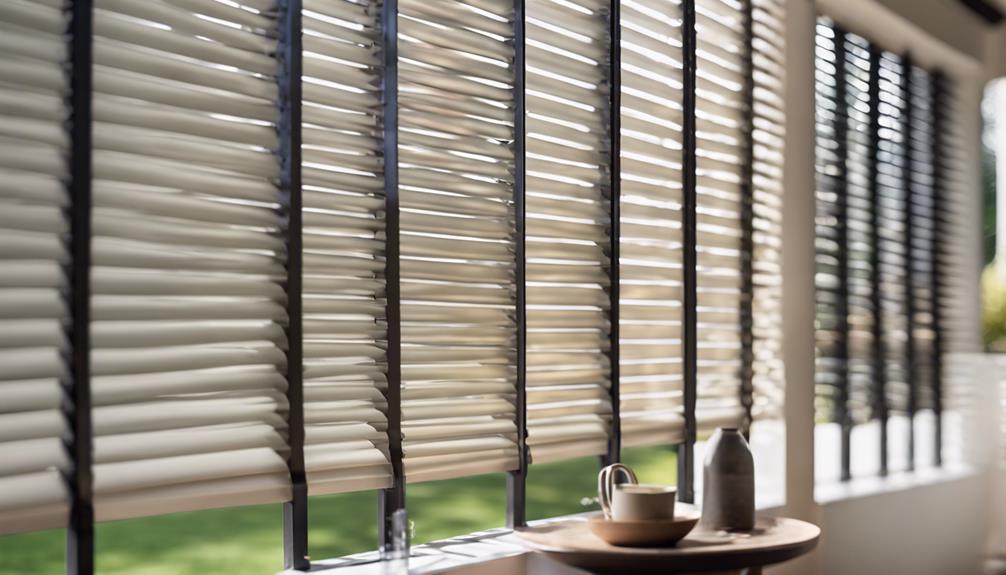
We found that basic vinyl blinds for alfresco areas typically range in cost from $200 to $500 on average. These vinyl blinds are a budget-friendly option for those looking to enhance their outdoor spaces without breaking the bank.
Not only do they provide a cost-effective solution, but vinyl blinds also offer UV protection and durability against the elements, making them a practical choice for alfresco areas. Keep in mind that additional expenses may arise for installation, depending on the size and complexity of the blinds.
When considering options for your alfresco space, vinyl blinds stand out as a reliable choice that combines affordability with functionality. Whether you're looking to shield your outdoor area from the sun's rays or create a more private setting, basic vinyl blinds can offer a practical and economical solution for your alfresco needs.
High-End Motorized Blinds

High-end motorized blinds offer advanced features like remote control functionality, enhancing convenience in operating blinds for alfresco areas.
Professional installation is vital to guarantee seamless integration with smart home systems and proper functionality.
Factors influencing the cost of motorized blinds include brand reputation, customizable options, and additional features that contribute to the overall luxurious experience.
Motorized Blinds Features
When selecting high-end motorized blinds, one can expect convenient remote control operation as a key feature. These blinds not only offer remote control access for easy adjustment but also come with a range of advanced features to enhance your living space.
Here are three notable features of high-end motorized blinds:
- Programmable Settings: High-end motorized blinds can be programmed to open and close at specific times, allowing for automated control based on your schedule and preferences.
- Sleek Aesthetic: Beyond functionality, these blinds provide a modern and sleek aesthetic, elevating the look of any room they're installed in.
- Smart Home Compatibility: With integrated smart home compatibility, these blinds can be seamlessly integrated into existing smart home systems, enabling convenient voice control and automation for a truly connected living space.
Investing in high-end motorized blinds not only offers convenience but also adds a touch of sophistication and efficiency to your home.
Installation Requirements for Motorized Blinds
Professional installation of high-end motorized blinds is essential to guarantee proper functionality and precise fit within your living space.
When it comes to installing motorized blinds, it involves more than just mounting them on your windows. The process includes intricate electrical wiring to connect the blinds to a power source and control mechanisms.
Additionally, programming and syncing the blinds with remote controls or smart home systems are vital steps in the installation process.
Since high-end motorized blinds are sophisticated, they may require additional structural adjustments for proper mounting and operation. This is where professional installation plays a significant role in ensuring everything functions seamlessly.
Factors Influencing Motorized Blinds Cost
Factors such as brand reputation, material quality, and blind size play a significant role in determining the cost of high-end motorized blinds. Here are three key aspects that influence the pricing of these premium window coverings:
- Type of Motorized Mechanism:
The specific type of motorized mechanism chosen for the blinds can greatly impact the overall cost. More advanced and sophisticated motor systems designed for seamless operation and smart home integration tend to be pricier.
- Customization Options:
Customization features such as fabric selection, color choices, and additional functionalities can increase the cost of high-end motorized blinds. Tailoring the blinds to specific preferences adds to the overall price.
- Installation Complexity:
The complexity of installing high-end motorized blinds, especially in unique window configurations or larger window sizes, can affect the total cost. Professional installation services for intricate setups may come at an additional cost, contributing to the overall pricing of the blinds.
Additional Cost Considerations
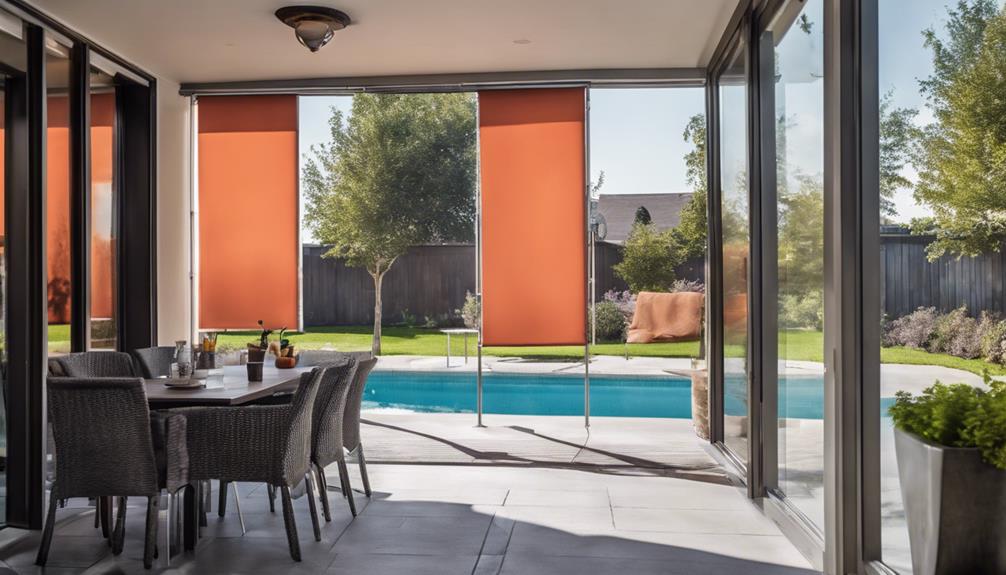
Considering the various additional cost factors involved, it's crucial to factor in installation fees, customization charges, warranty costs, maintenance expenses, and delivery charges when budgeting for alfresco blinds.
Labor costs for installation usually range from $30 to $70 per hour, impacting the overall budget significantly. Opting for motorized blinds can significantly increase the price, with average costs ranging from $1,000 to $2,500.
If you choose custom blinds with premium materials and features, be prepared for higher costs, typically ranging from $2,000 to $5,000. These customization charges can add up, so it's important to carefully consider your preferences against your budget.
Additionally, warranty costs, maintenance expenses, and delivery charges shouldn't be overlooked, as they can affect the total cost of your alfresco blinds.
To manage expenses, you may explore options like DIY installation, comparing quotes from different suppliers, choosing basic materials, buying off-season, and negotiating with suppliers for better deals.
Comparison of Quotes
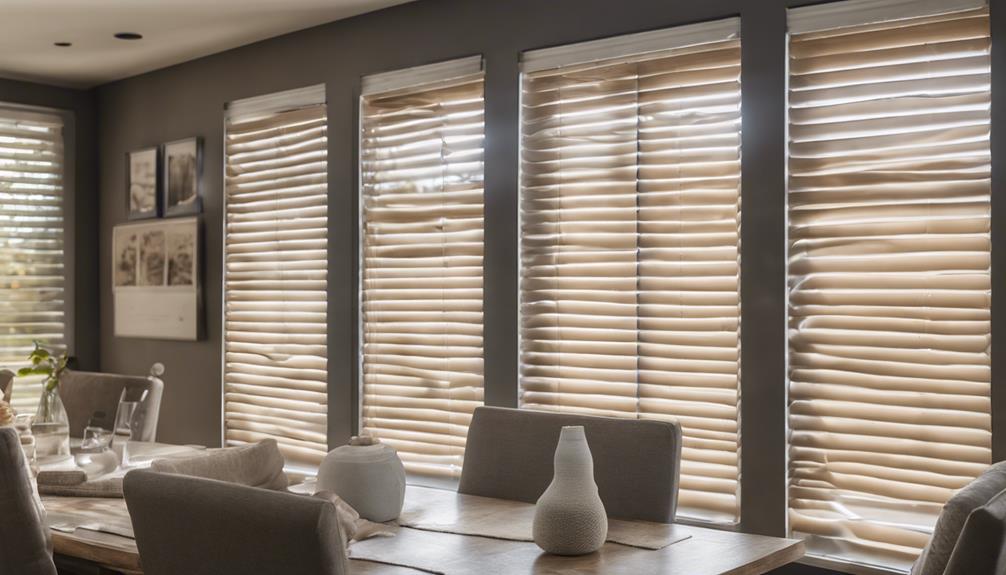
When comparing quotes for alfresco blinds, it's important to gather pricing information from at least three local installers to comprehend the range of costs involved.
Here are three key factors to take into account when comparing quotes:
- Local Blind Installer:
Opting for a local installer can often result in better service, quicker response times, and a more personalized experience compared to larger, national companies.
- Warranties:
Inquire about the warranties offered by each installer. Understanding the warranty terms can provide insight into the quality of the blinds and the confidence the installer has in their product.
- Installation Timelines:
Discuss the estimated installation timelines with each installer. Knowing how long the installation process will take can help you plan accordingly and avoid any unexpected delays.
DIY Installation Tips
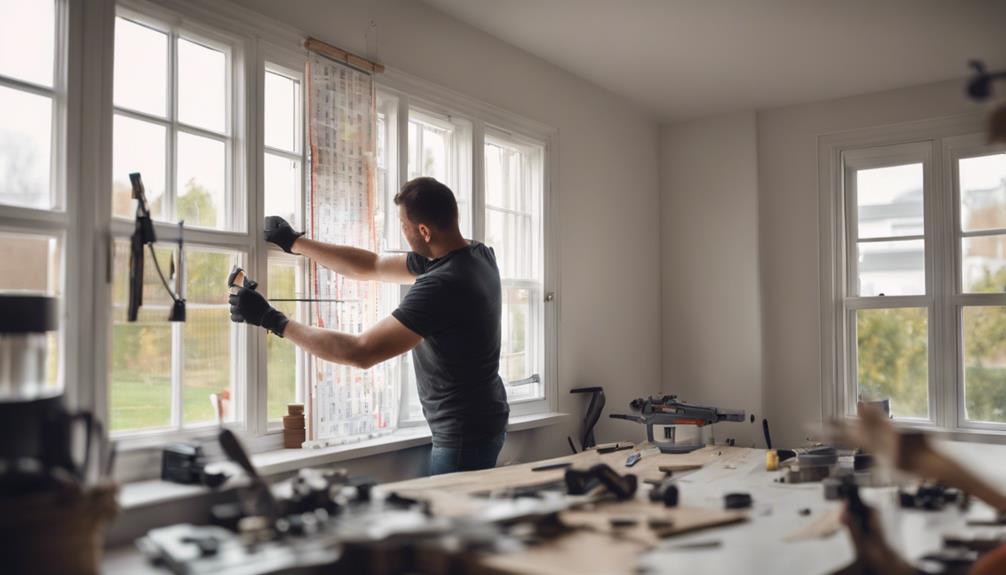
For those looking to save on labor costs, tackling the installation of alfresco blinds yourself can be a cost-effective option. DIY installation allows you to save money, with costs ranging from $40 to $120 per window, which can be a significant saving compared to professional installation fees. Factors such as window style and material choice will impact the overall cost of your DIY project. Basic mini-blinds, for instance, can cost around $20 and are relatively easy to install, making them a good option for a DIY project. On the other hand, vertical blinds for sliding glass doors can range from $140 to $650, depending on the material and style chosen.
Consider the table below for a quick comparison between DIY installation and professional installation costs:
| Aspect | DIY Installation Cost Range | Professional Installation Cost Range |
|---|---|---|
| Basic Blinds | $40 – $120 per window | $55 – $170 per window |
| Vertical Blinds | $140 – $650 | $190 – $1,000 |
Material Options Overview
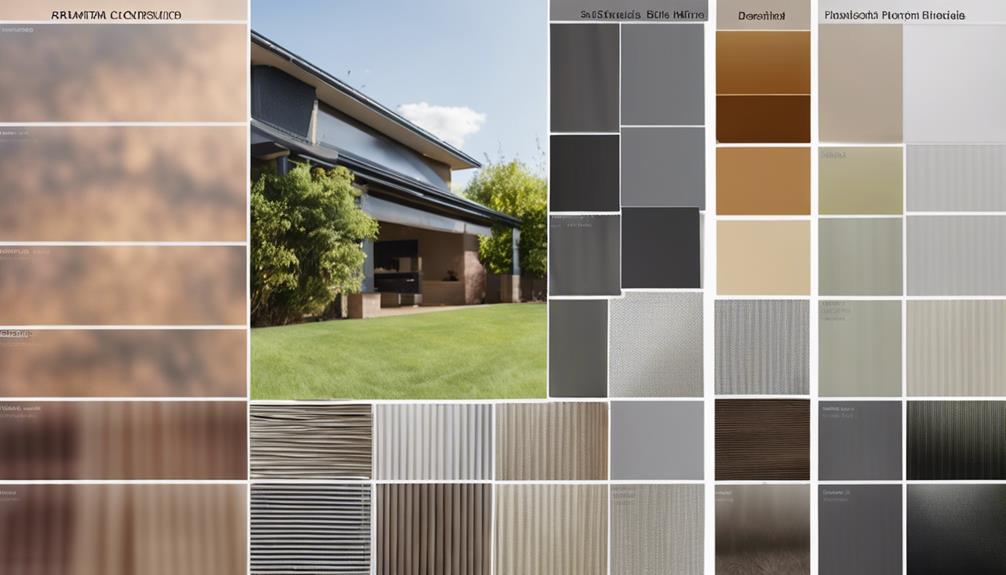
Exploring the diverse materials available for alfresco blinds reveals a range of options suited to varying needs and preferences. When considering the right material for your outdoor space, factors like durability, UV protection, and aesthetics play an essential role.
Here are three popular material options for alfresco blinds:
- PVC Blinds: PVC blinds are favored for their durability and weather resistance, making them an excellent choice for areas exposed to harsh elements. These blinds offer reliable protection against UV rays and are easy to maintain, ensuring longevity and functionality.
- Acrylic Blinds: Acrylic blinds provide a more natural look compared to PVC, blending well with outdoor surroundings. They offer good UV protection and are known for their durability, making them a stylish and practical choice for alfresco areas.
- Canvas Blinds: Canvas blinds combine elegance with functionality, offering UV protection and a softer aesthetic. Suitable for creating a cozy outdoor ambiance, canvas blinds are a popular choice for those seeking both style and performance in their alfresco space.
Value for Outdoor Space

Considering the overall impact on outdoor ambiance, the value of alfresco blinds extends beyond mere functionality. These blinds not only provide protection from elements but also enhance the aesthetic appeal of the outdoor space.
The price range of $1,500 to $6,000 per blind reflects the variety of options available, catering to different budget constraints and design preferences. While crank style blinds offer a budget-friendly option starting at around $1,500, manual track guided blinds, ranging from $2,500 to $4,000, provide a more enclosed space with full block-out capabilities. Electric blinds, priced between $2,500 to $6,000 per blind, offer convenience and ease of use, albeit at a higher cost and requiring professional installation.
When considering the value of alfresco blinds for your outdoor space, factors such as fabric grade, color, model, and installation location play an important role in determining the overall impact and functionality of these features.
Maintenance Expense Planning

When planning for alfresco blinds maintenance costs, it's important to take into account various factors that may impact your budgeting.
From routine cleaning supplies to occasional repairs, allocating funds for upkeep is essential for preserving the quality of your blinds.
Additionally, setting aside money for professional maintenance services can help prolong the lifespan of your alfresco blinds and prevent costly issues down the line.
Maintenance Cost Factors
Our annual maintenance budget for alfresco blinds should account for cleaning, repairs, and upkeep costs.
When considering maintenance cost factors for alfresco blinds, keep in mind the following:
- Material Type: The material of your alfresco blinds can greatly impact maintenance costs. For example, fabric blinds may require more frequent cleaning compared to PVC blinds.
- Regular Maintenance: Investing in regular maintenance routines can help prevent costly repairs down the line. Simple tasks like periodic cleaning and inspection can prolong the life of your blinds.
- Upkeep Expenses: Factor in ongoing upkeep expenses when budgeting for your alfresco blinds. This includes things like replacing worn-out components, refinishing surfaces, or repairing mechanisms to ensure optimal functionality.
Budgeting for Upkeep
To effectively plan for maintenance expenses, we must carefully budget for the cleaning, repairs, and upkeep of our alfresco blinds. Cleaning expenses for alfresco blinds can vary depending on factors such as the material of the blinds, their size, and how frequently they need to be cleaned.
Repair costs may arise if components like slats, cords, or mechanisms become damaged over time. Regular maintenance is important as it not only helps extend the lifespan of the blinds but also reduces the likelihood of expensive repairs in the future.
Proper budgeting for upkeep is vital to guarantee the longevity and effectiveness of your alfresco blinds. By allocating resources for cleaning, repairs, and regular maintenance, you can keep your alfresco blinds in excellent condition and maximize their durability.
Frequently Asked Questions
How Much Should I Budget for New Blinds?
When budgeting for new blinds, factor in costs like installation fees, customization charges, and maintenance expenses. Consider materials, size, and mechanism for an accurate estimate. Savings can come from DIY installation, off-season purchases, and negotiating with suppliers.
How Much Do Ziptrak Outdoor Blinds Cost?
When contemplating Ziptrak outdoor blinds, costs typically range from $350 to $1,000 per square meter. Additional features like motorization or custom colors can bump up the price. Professional installation guarantees a perfect fit.
Why Are Outdoor Blinds so Expensive?
Outdoor blinds are expensive due to custom powder coating options, various blind models affecting pricing, necessary structural adjustments, high-quality fabric grades for durability, and installation complexities like double-storey buildings or balconies contributing to increased costs.
How Much Do Blinds Cost to Be Fitted?
Blinds can cost between $211 to $1,340 for fitting, with factors like window style and brand influencing the price. Considering labor and material quality is crucial. Request quotes to accurately budget for the number of windows and desired features.
Conclusion
To sum up, the cost of alfresco blinds can vary depending on factors such as material, size, and customization. On average, basic vinyl blinds can range from $200 to $500, while high-end motorized options can exceed $1000.
Considering the value they add to your outdoor space, investing in quality blinds is like adding the perfect finishing touch to a masterpiece.
With proper research and planning, you can find the right alfresco blinds that suit your budget and style.
- About the Author
- Latest Posts
Introducing Ron, the home decor aficionado at ByRetreat, whose passion for creating beautiful and inviting spaces is at the heart of his work. With his deep knowledge of home decor and his innate sense of style, Ron brings a wealth of expertise and a keen eye for detail to the ByRetreat team.
Ron’s love for home decor goes beyond aesthetics; he understands that our surroundings play a significant role in our overall well-being and productivity. With this in mind, Ron is dedicated to transforming remote workspaces into havens of comfort, functionality, and beauty.
Alfresco
How Many Coats of Frenchic Alfresco? Get the Best Results!
Discover why applying multiple coats of Frenchic Alfresco paint is crucial for achieving stunning results and long-lasting durability.
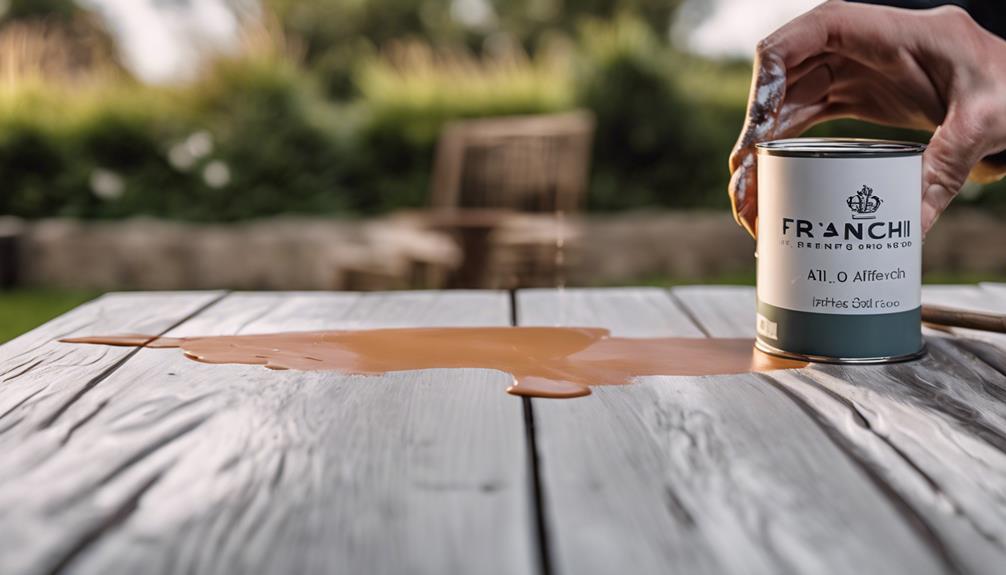
To achieve the best results with Frenchic Alfresco paint, we recommend applying at least two coats. Multiple coats enhance color vibrancy, increase durability, and provide better coverage for a professional finish. Proper drying times between coats are vital for adhesion and longevity. The second coat intensifies color and protection against wear. For a polished look, make sure each coat dries completely. Additional layers can be necessary for porous surfaces to ensure even coverage. If you want to know more about how to maximize the benefits of applying multiple coats, discover additional tips for a flawless painting experience.
Key Takeaways
- Apply a minimum of 2 coats for enhanced color depth and durability.
- Adjust coats based on surface porosity and desired opacity.
- Ensure even application for a smooth finish and longevity.
- Consider a third coat for richer color payoff and durability.
- Let each coat dry completely for optimal results.
Benefits of Applying Multiple Coats
By applying multiple coats of Frenchic Alfresco, we enhance the final finish's color depth and richness. Each additional coat not only intensifies the vibrancy of the color but also increases the durability of the painted surface, particularly beneficial for outdoor furniture exposed to the elements. The finishing coat acts as a shield, protecting the underlying layers and extending the longevity of the paint job.
When we apply a second coat, we improve the coverage, guaranteeing a more uniform and professional appearance. This process helps to achieve a smoother surface, minimizing the visibility of brush strokes and imperfections. The result is a more polished and aesthetically pleasing finish that stands the test of time.
To create a robust and attractive finish, it's essential to follow the manufacturer's recommendation of applying at least two coats. This secures a strong and durable finish that not only looks great but also provides lasting protection for your painted surfaces.
Importance of Proper Drying Times
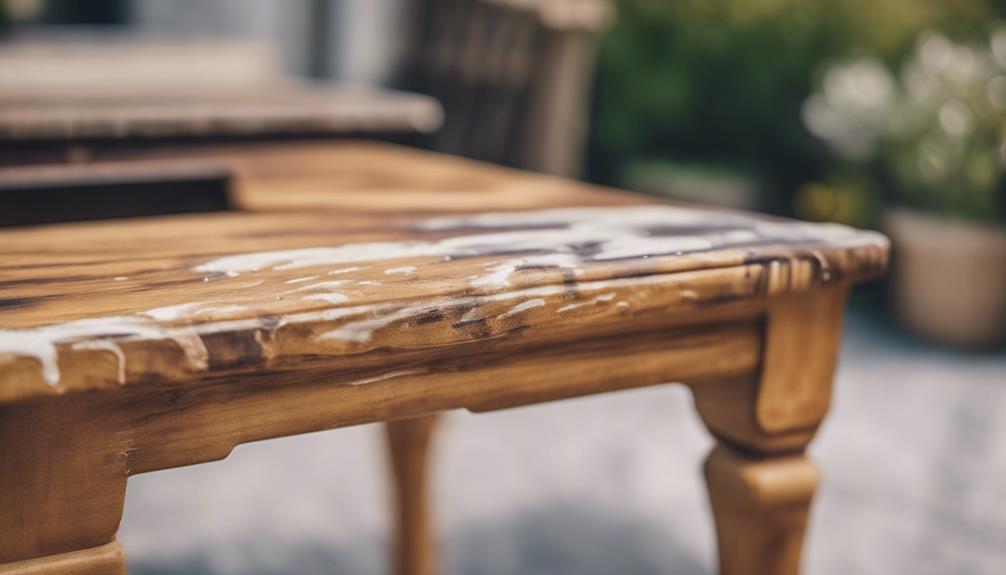
Proper drying times are vital for the success of our Frenchic Alfresco paint projects. Rushing the drying process can jeopardize the adhesion and overall durability of the paint.
It's imperative to allow each coat to fully dry to avoid issues like bubbling, cracking, or an uneven finish.
Optimal Drying Conditions
Ensuring the ideal drying conditions for Frenchic Alfresco coats is essential for achieving a durable and smooth finish. When applying the first coat, it's important to observe proper drying times to promote the best adhesion.
Waiting between coats is necessary, with a minimum of an hour recommended to allow the paint to dry adequately for a seamless and even result. Keep in mind that drying times can be influenced by factors such as temperature and humidity. Hence, following the manufacturer's guidelines is paramount to guarantee the best outcome.
Rushing the drying process can have negative repercussions, potentially leading to tackiness, uneven coverage, or even causing damage to the painted surface. To avoid these issues, it's imperative to allow each coat to dry completely before proceeding with the next one.
Impact on Final Finish
Waiting for the suggested drying times between coats of Frenchic Alfresco paint is essential to guarantee a flawless and durable final finish. Rushing the process by not allowing each coat to dry adequately can have a detrimental impact on the overall outcome.
The UK weather, with its varying temperatures and humidity levels, plays a vital role in determining the drying times needed for each coat to set properly. By following the recommended drying times, the paint can fully adhere to the surface, creating a strong bond that secures longevity and resistance to wear and tear.
Patience is key in this process, as each coat must be given ample time to dry before applying the next one to avoid any imperfections in the finish. Taking the time to allow for proper drying between each coat will ultimately result in a smooth, even, and professional-looking finish that enhances the beauty and durability of the painted surface.
Enhancing Color Vibrancy and Durability
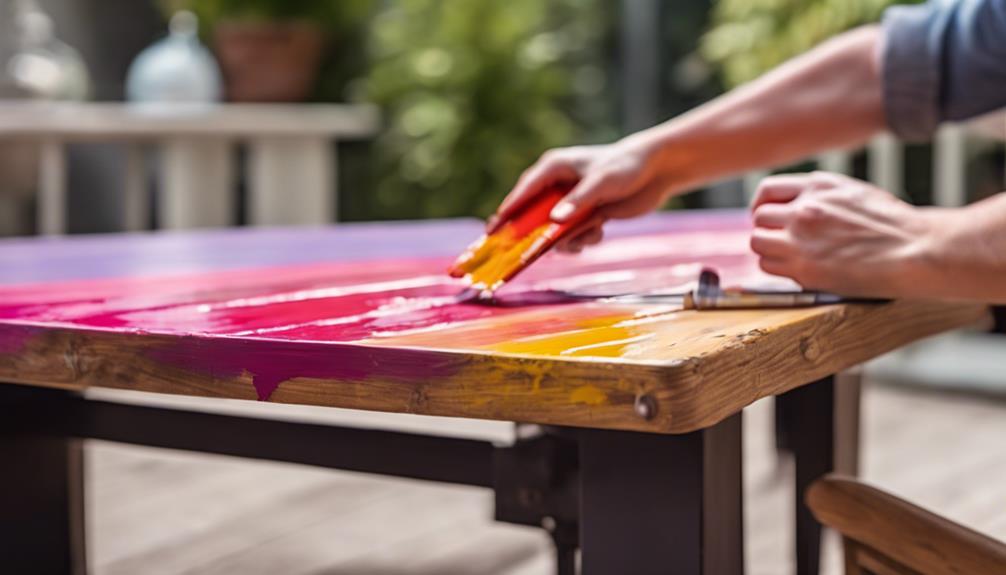
When we apply two coats of Frenchic Alfresco paint, we're not just enhancing color vibrancy; we're also ensuring a durable finish that stands the test of time.
The second coat plays an essential role in achieving a consistent and rich color across the surface, providing that intense color intensity boost we desire.
Color Intensity Boost
To intensify the color vibrancy and enhance the durability of Frenchic Alfresco paint, consider applying a second coat for a richer finish. Adding that extra layer not only deepens the color intensity but also provides increased protection against wear and tear. Here are three key points to keep in mind for boosting color vibrancy and durability:
- Enhanced Color Depth:
The second coat of Frenchic Alfresco paint brings out the richness and depth of the chosen color, creating a more vibrant and striking appearance.
- Improved Longevity:
By applying a second coat, you're strengthening the paint's durability, making it more resistant to scratches, fading, and other forms of damage over time.
- Better Surface Protection:
The additional layer not only enhances the aesthetic appeal but also acts as a shield, safeguarding your furniture or surfaces from daily use and external elements.
Long-lasting Protection
For enhanced color vibrancy and durability, applying multiple coats of Frenchic Alfresco paint is essential to guarantee long-lasting protection for your furniture or surfaces. By applying at least 2 coats of Frenchic Alfresco, you not only secure a more vibrant and deep color but also enhance the paint's durability for a longer-lasting finish. These additional coats create a strong barrier against various elements, making the paint more resistant to everyday wear and tear.
Additionally, each coat contributes to better coverage, resulting in a smoother and more professional appearance. The application of multiple coats is vital in extending the lifespan of the paint job, providing both enhanced protection and aesthetic appeal. Investing the time and effort into applying multiple coats of Frenchic Alfresco paint won't only enrich the color but also improve the longevity and durability of your painted furniture or surfaces.
Achieving Professional Finish With Second Coat
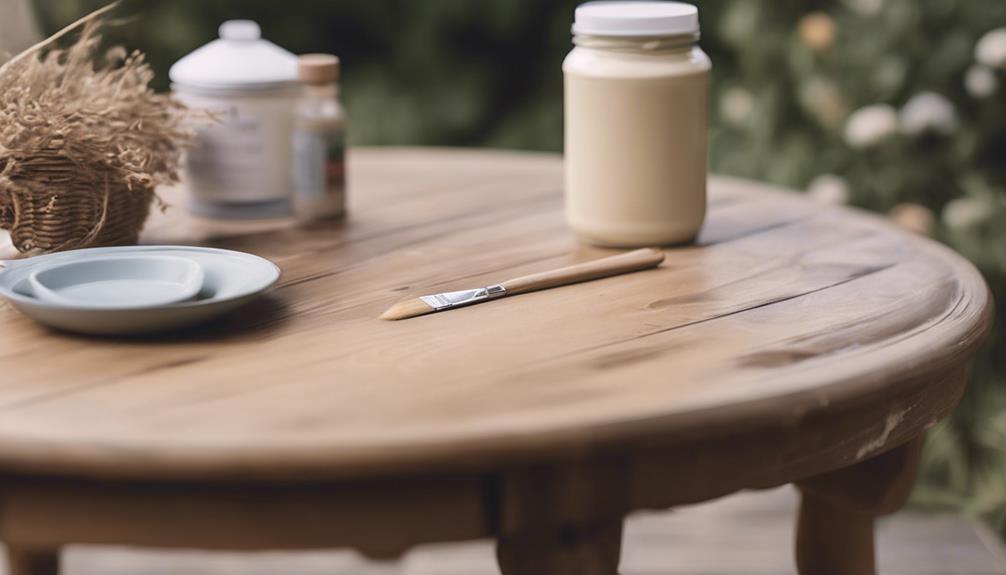
To achieve a professional finish with Frenchic Alfresco paint, applying a second coat is essential for enhancing color vibrancy and durability. Here's how to achieve the best results:
- Even Out Inconsistencies:
The second coat helps to smooth out any imperfections or uneven coverage from the first coat, resulting in a more uniform and flawless appearance.
- Maximize Longevity:
By applying a second coat of Frenchic Al Fresco paint, you're increasing the protection and durability of the painted surface, ensuring it can withstand daily wear and tear for an extended period.
- Enhance Aesthetic Appeal:
The additional layer of paint not only boosts color vibrancy but also adds depth and richness to the overall look, giving your furniture or surfaces a professional and polished finish.
Ensuring Better Coverage and Adhesion
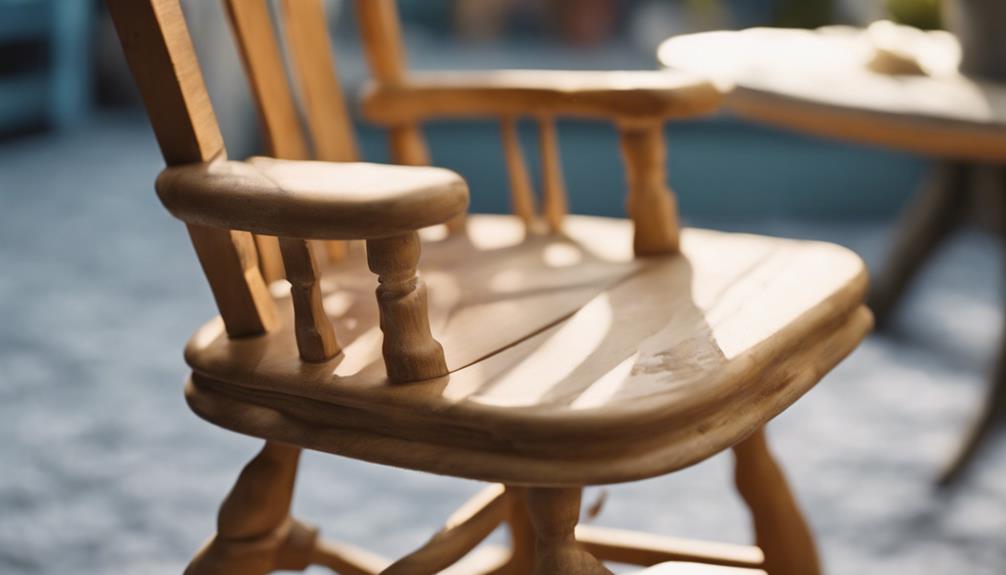
Let's enhance the coverage and adhesion of your Frenchic Alfresco paint by applying a minimum of two coats for best results. Each layer should be applied evenly, allowing it to dry completely before proceeding with the next coat. This method guarantees a solid foundation and maximizes the paint's durability on various surfaces.
For porous materials, additional coats might be necessary to achieve a long-lasting and professional finish. The second coat not only intensifies the color but also boosts the overall durability of the paint, making it resistant to wear and tear over time.
Remember to maintain consistent batch numbers throughout the painting process to ensure a uniform color finish across all coats.
Tips for Smoother Application
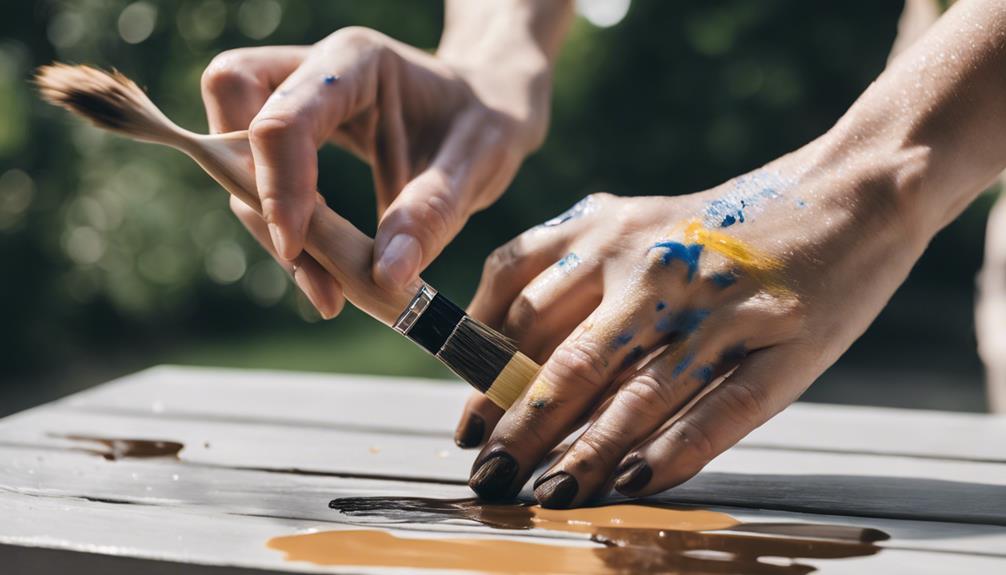
Enhancing the application process for smoother results involves applying thin, even coats of Frenchic Alfresco paint. To guarantee a professional finish, consider the following tips:
- Use High-Quality Tools: Invest in a high-quality paintbrush or roller designed for use with Frenchic Alfresco paint. The right tools can make a significant difference in achieving a smooth application and a flawless result.
- Apply Thin Coats: Avoid thick layers of paint, as they can lead to drips, uneven drying, and a less than perfect finish. Opt for thin coats, allowing each layer to dry completely before applying the next one.
- Consider a Third Coat: For enhanced durability and a richer color payoff, think about applying a third coat of Frenchic Alfresco paint. This additional layer can provide extra protection and depth to your painted surface, ensuring a long-lasting and beautiful result.
Longer-Lasting Results With Additional Coats
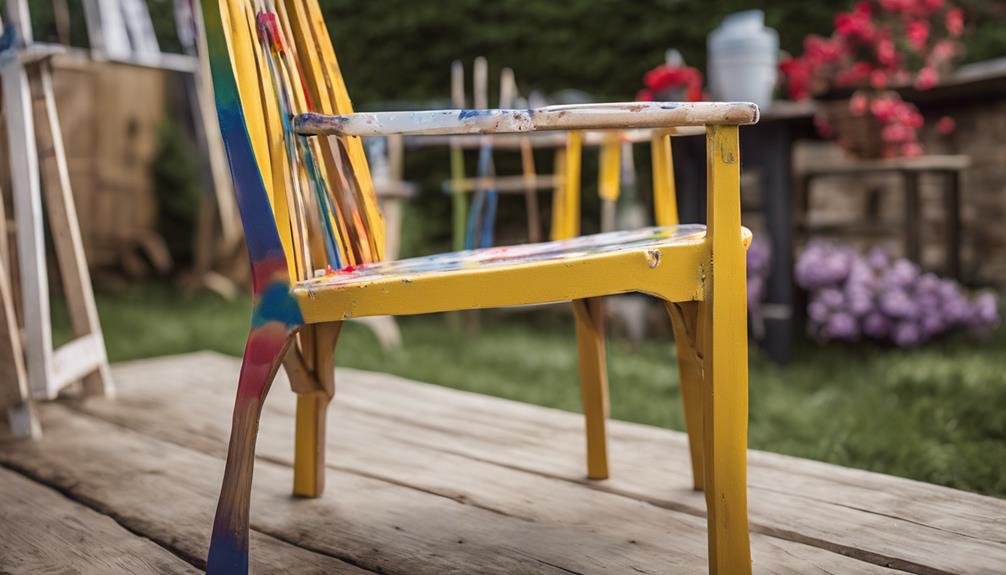
For best durability and longevity, applying a minimum of two coats of Frenchic Alfresco paint is recommended. Additional coats play an important role in enhancing the color depth and increasing the overall durability of the painted surface.
When dealing with porous surfaces, more coats may be necessary to achieve full coverage and guarantee the paint's longevity.
Each coat of Frenchic Alfresco paint not only adds to the color vibrancy but also provides added protection against various elements, making the surface more resistant to wear and tear over time. It's essential to allow each coat to dry completely before applying the next layer to achieve a smooth and even finish.
The second coat, in particular, significantly improves the durability of the paint job while intensifying the color for a more striking appearance.
Recommended Number of Coats for Optimal Results
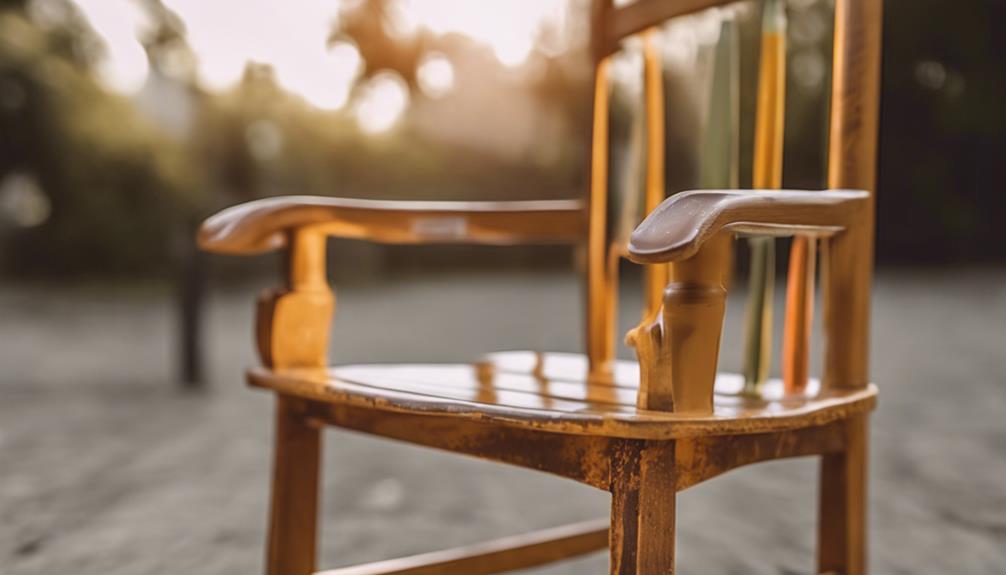
How many coats of Frenchic Al Fresco paint are recommended for achieving best results?
When aiming for best results, applying a minimum of 2 coats is advised.
To guarantee the painted surface looks its best, consider the following:
- Two Coats Minimum:
Applying at least 2 coats of Frenchic Al Fresco paint helps create a solid base that enhances the color and durability of the finish.
- Consider Surface Porosity:
For porous surfaces or when desiring a more opaque look, additional coats may be necessary. Adjust the number of coats based on the surface texture and desired outcome.
- Even Application for Durability:
Each coat should be applied evenly to the painted surface. This ensures a smooth and durable finish that will stand the test of time.
Frequently Asked Questions
How Many Coats of Frenchic Alfresco?
When painting with Frenchic Alfresco, we recommend applying a minimum of 2 coats for best results. Additional coats might be necessary for porous surfaces. Let each coat dry completely before proceeding for vibrant, durable finish.
How Long Does It Take for Frenchic Alfresco to Cure?
It takes 24-48 hours for Frenchic Alfresco to cure completely. We should allow proper drying and curing time between coats for a lasting finish. Remember, patience pays off with a beautifully hardened painted surface.
How to Get the Best Finish With Frenchic Paint?
Painting with Frenchic is like crafting a masterpiece. We guarantee a flawless finish by applying multiple coats, allowing each to dry fully. Our technique involves following the wood grain, using brushes or rollers for a professional look.
Do I Need to Sand Before Using Frenchic Alfresco?
Yes, sanding before using Frenchic Alfresco is essential. It guarantees proper adhesion, smooth finish, and promotes better paint absorption. We should sand lightly and evenly to create a suitable surface for painting, enhancing durability and longevity.
Conclusion
To sum up, applying multiple coats of Frenchic Alfresco can greatly enhance the color vibrancy, durability, and overall finish of your project.
By following proper drying times and techniques, you can achieve professional results with better coverage and adhesion.
For best results, we recommend applying at least two coats of Frenchic Alfresco to guarantee a long-lasting and beautiful finish that will stand the test of time.
Remember, quality takes time to achieve, but the results are well worth the effort.
- About the Author
- Latest Posts
Introducing Ron, the home decor aficionado at ByRetreat, whose passion for creating beautiful and inviting spaces is at the heart of his work. With his deep knowledge of home decor and his innate sense of style, Ron brings a wealth of expertise and a keen eye for detail to the ByRetreat team.
Ron’s love for home decor goes beyond aesthetics; he understands that our surroundings play a significant role in our overall well-being and productivity. With this in mind, Ron is dedicated to transforming remote workspaces into havens of comfort, functionality, and beauty.
-

 Vetted2 weeks ago
Vetted2 weeks ago15 Best Leather Restorer Products to Revive Your Furniture and Accessories
-

 Vetted2 weeks ago
Vetted2 weeks ago15 Best Contact Paper for Kitchen Cabinets to Elevate Your Home Decor
-

 Vetted3 weeks ago
Vetted3 weeks ago15 Best Leg Massagers to Relieve Tension and Improve Circulation – Ultimate Guide
-

 Vetted4 weeks ago
Vetted4 weeks ago14 Best Lawn Tractors of 2024 – Ultimate Guide for Your Yard Maintenance
-

 Vetted1 week ago
Vetted1 week ago15 Best Drain Snakes to Unclog Your Pipes Like a Pro
-
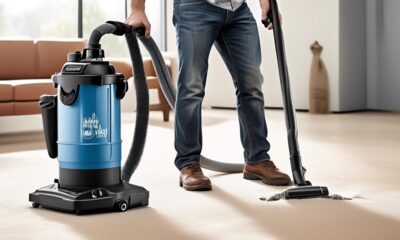
 Vetted4 weeks ago
Vetted4 weeks ago15 Best Commercial Backpack Vacuums for Efficient Cleaning Tasks
-

 Vetted3 weeks ago
Vetted3 weeks ago15 Best Lawn Games for Adults to Elevate Your Outdoor Gatherings
-

 Vetted4 weeks ago
Vetted4 weeks ago15 Best Group Games for Adults to Spice Up Your Next Gathering























